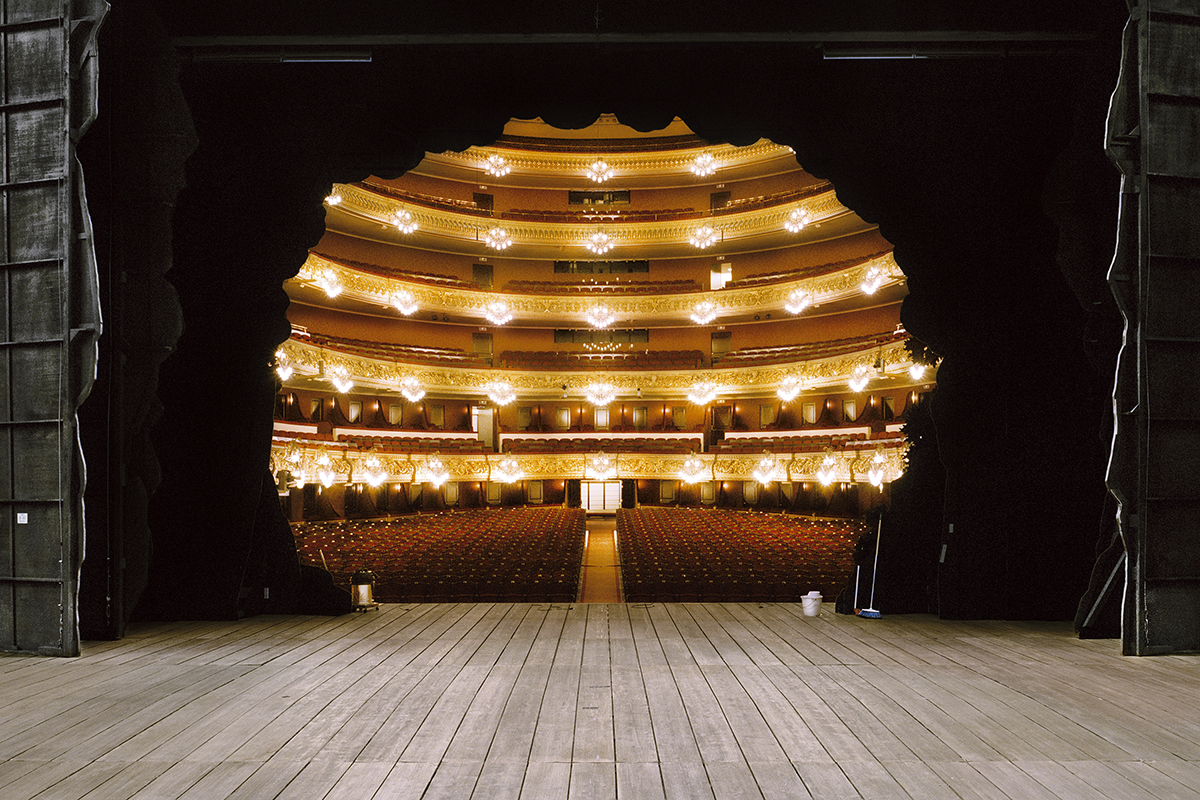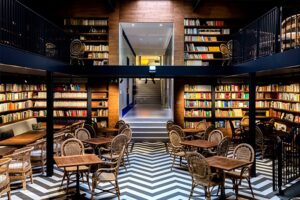The literature, music and art scenes in Barcelona: Current trends and challenges


Inés Crosas
Partnerships and Communications Advisor at RMIT Europe

Irene Coll Sánchez
Fundraising Manager
Barcelona is a source of inspiration for professionals and lovers of literature, music and the arts. Last year in the Catalan capital, 21,325 books were published, nearly 900,000 people attended large-scale concerts, and more than 23 million visitors passed through the doors of its many museums and exhibition venues.
In light of these impressive figures, this blog post focuses on three of Barcelona’s key cultural sectors: literature, music and the arts. It also identifies some of the main trends in each sector, as well as some challenges to overcome.
Barcelona’s literature scene
Barcelona is a UNESCO City of Literature, the birthplace and home of many renowned writers who have set their stories in the Catalan capital. One famous example is the Barcelona-born author Mercè Rodoreda, who set her novel ‘La Plaça del Diamant’ (‘The Time of the Doves’, in English) in the city.
Over the years, Barcelona has become the adopted home of many influential writers. Foreign-born novelists such as Gabriel García Márquez, Mario Vargas Llosa, and Cristina Peri Rossi all decided to move to the Catalan capital, which helped give the city greater international projection.
Not only is Barcelona home to several large publishing houses, but it also boasts more than 200 independent publishers, 300 bookshops and a huge network of public libraries. Literary festivals, fairs and awards ceremonies also feature prominently in the city’s cultural calendar.
‘El dia de Sant Jordi’ (Saint George’s Day) encapsulates the importance that the city places on literature. Every 23 April, the streets, boulevards, and squares of Barcelona are filled with stands selling books and roses for a single day in devotion to the written and recited word.

Current trends
According to a national survey, 52% of the Spanish population reads at least once a week.These are promising figures for this growing sector and the city of Barcelona, which has a rich literary heritage .
In economic terms, more than €23.7 million was spent on books on ‘El dia de Sant Jordi’ in Barcelona in 2023, a 15% increase on 2022 figures. While it may seem like we’re living in an increasingly digital world, book sales are on the rise. In fact, the data show that 90% of books are sold in paper rather than digital format.
Challenges
The publishing sector faces many challenges, including the constant need for creative content and the transfer of social and cultural phenomena into literary formats. In short, this means conveying what is going on around us, such as the boom in social media usage, in the books we read.
Reading can have a transformational impact on society. As such, publishing houses bear the responsibility to promote a diverse range of voices in the works they publish and to drive positive cultural and environmental change. A good example in the field of sustainability is Penguin Random House's recent commitment to print all its books using vegetable-based inks.
In light of extraordinary developments in AI, the publishing industry is also calling for legislation governing the use of intellectual property in literary works. This is an issue that the wider cultural sector will also need to respond to.
Barcelona's music scene
Barcelona is becoming increasingly well-known for its large-scale concerts and music festivals. Its strategic location and diversity of venues are a huge attraction for stakeholders and pioneers in the music industry.
World-famous artists such as Elton John, Beyoncé and Rosalía have all performed in Barcelona in recent months. Mid-sized venues such as Sala Razzmatazz and Sala Apolo also hold gigs various times a week, meaning the city’s residents have access to regular musical events.
The success of events such as Primavera Sound, Cruïlla, Sónar and Alma Festival has consolidated Barcelona’s position as an international benchmark for large-scale music festivals.
Primavera Sound is the city’s largest and most international music festival. More than 253,000 festivalgoers attended this year’s edition, which generated approximately €150 million in revenue for the city.
Current trends
Over the last two decades, the streaming boom and the rise in social media use have had an enormous impact on the music industry. One such example is the promotion of live music as a business model.
The surge in festival ticket sales was partly driven by the impact of the COVID-19 pandemic and the subsequent desire for collective experiences. This phenomenon is reflected in the revenue generated by concerts in 2022, which was the highest ever recorded and significantly higher than in 2021.
Challenges
Considering the needs of local residents and attracting a diverse audience are the main challenges faced by festival organisers. It is essential to involve local communities in the planning of large-scale events as well as apply inclusion measures such as the 'Guide to Accessibility and Inclusion in Music Festivals' produced by the Music for All Foundation.
Music industry stakeholders are also calling for more balanced lineups. It wasn’t until 2019 that Primavera Sound became the first major festival to include a lineup with a 50/50 gender balance. It also introduced the 'Nobody is Normal'project to raise awareness and support for freedom of sexual orientation and gender identity.
The environmental impact of large-scale concerts in terms of energy consumption, waste and emissions represents another significant challenge. Music venues are increasingly adopting more sustainable practices such as recycling, using renewable energies and following a circular economy model. While these are positive early signs, there is still a long way to go.
Barcelona's art scene
Barcelona is home to the most museums and art galleries of all Spanish cities. In 2019, it had 104 and 181, respectively.
Local and international talent can access training programmes in some of the city’s renowned art schools, such as the College of Arts & Design Barcelona (BAU), la Escola Massana and the Barcelona Academy of Art. The Independent Studies Programme of the Barcelona Museum of Contemporary Art (MACBA) and the communication platform Exibart also stand out.
The post-industrial Poblenou neighbourhood has become Barcelona’s creativity and innovation hubwith a plethora of artistic workshops, showrooms and unconventional galleries that open the door to new audiences and alternative and groundbreaking creators.
Current trends
The latest edition of SWAB Barcelona (the International Contemporary Art Fair) focused on the city´s artistic context, where abstraction, surrealist strokes and poetic and colourful landscapes are in vogue.
The art fair highlighted how galleries are increasingly opting for experimental exhibitions that are not necessarily linked to plastic arts. Likewise, interdisciplinary collaboration continues to give way to more innovative proposals that can attract a younger and more diverse audience.
Challenges
The visual arts sector does not follow a mass consumption model and is therefore limited to a very specific audience. Art galleries are particularly affected by this reality.
Initiatives such as the Barcelona Gallery Weekend, Art Nou and AR-DE seek to overcome this issue by highlighting the excellent work carried out by art galleries as culture- and knowledge-generating spaces open to all.
Barcelona does not have a particularly dynamic art collection scene, with most pieces being acquired outside the city. The Guild of Art Galleries maintains that introducing a cultural VAT comparable to the rest of Europe, along with the reform of the Patronage Law, could help address this problem and reinvigorate art collection in the city.
Final reflections
Barcelona has huge potential in the fields of literature, music and the visual arts. However, it is not without its challenges. Avoiding cultural elitism and ensuring that all sectors of society have fair and equal access is one of the greatest challenges currently facing the city.
To tackle these challenges, both political will and a joint response from the public and private sectors and other industry stakeholders are required.
It is also vital to understand the intrinsic and inseparable relationship between culture and education and to implement cross-cutting and comprehensive policies to implement cross-cutting and comprehensive policies that encompass both areas.
Lastly, we must not lose sight of the fact that accessing and participating in culture is a right in itself and that its greatest impact is both long-term and intangible; namely, the evolution and transformation of societies.
If you want to know the latest English news about Barcelona and the people who bring it to life, sign up to our Blog.







